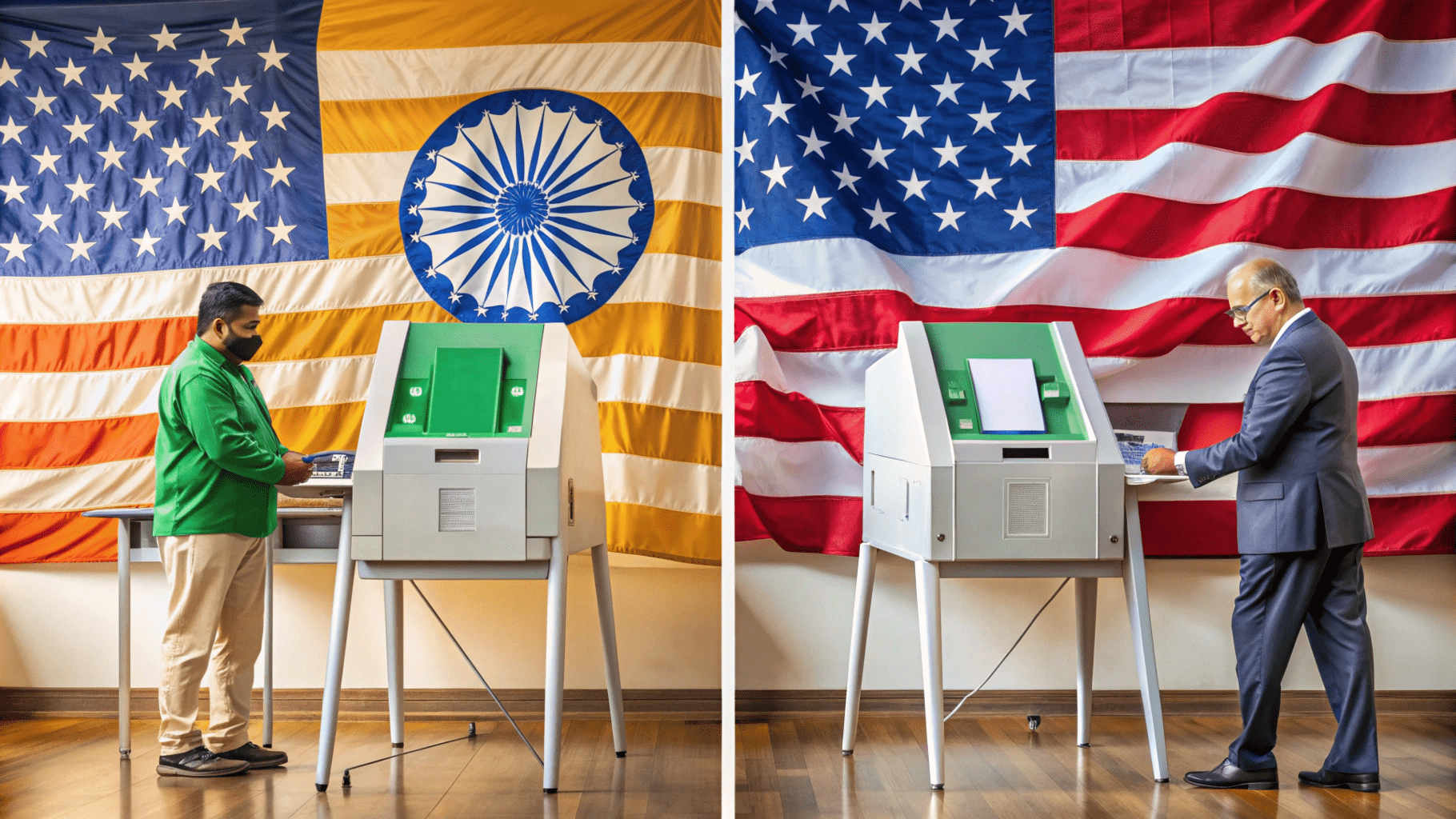Elections are the cornerstone of democracy, providing citizens with a voice in their government. However, the methods and frameworks used to manage elections can vary significantly from one country to another. In this blog, we explore the election management systems in India and the United States, delving into their legal frameworks, electoral systems, and various facets of election administration.

Legal Framework
India:Elections in India are governed by the Constitution of India, the Representation of the People Act, and regulations set by the Election Commission of India (ECI). The ECI is an independent constitutional authority entrusted with overseeing elections at both national and state levels. This ensures that the electoral process remains impartial and free from political influence.
United States:In contrast, the US operates under a federal system where elections are regulated by a mix of federal, state, and local laws. The US Constitution grants states the power to create and enforce their own election laws, leading to a decentralized system. As a result, each state has its own election management authorities and regulations, which can create variations in the election process across the country.
Electoral System
India:India employs a parliamentary system of government. Voters elect members of the Lok Sabha (House of the People) and state legislative assemblies through direct elections. The ECI is responsible for managing general elections, by-elections, and referendums, ensuring a comprehensive and unified approach to the electoral process.
United States:The US follows a federal and presidential system of government. Voters elect the President and Vice President through the Electoral College system, while members of Congress (House of Representatives and Senate) and state and local officials are chosen through direct elections managed by state and local authorities. This creates a multifaceted and sometimes complex electoral landscape.
Election Administration
India:The ECI plays a central role in election administration, handling voter registration, candidate nominations, polling, counting of votes, and declaring results. The Commission works in tandem with state election commissions to conduct elections at various levels, ensuring a streamlined and effective electoral process.
United States:Election administration in the US is decentralized. Each state is responsible for conducting its own elections, which includes overseeing voter registration, managing polling places, counting ballots, and certifying results. Federal support comes through agencies like the Election Assistance Commission (EAC), which provides guidance and assistance but does not directly manage elections.
Voter Registration
India:Voter registration in India is managed by the ECI, which maintains the electoral roll and issues voter ID cards. Registration is mandatory for participating in elections, ensuring a comprehensive and orderly voter database.
United States:In the US, voter registration varies by state, with different deadlines and processes. Eligible citizens must register with their state or local election authorities. The options for registration can include online, mail-in, or in-person methods, reflecting the decentralized nature of the US electoral system.
Voting Process
India:Voting in India is conducted at designated polling stations using paper ballots. The ECI employs measures such as voter identification checks, indelible ink marking, and voter verifiable paper audit trails (VVPATs) for electronic voting machines (EVMs) to ensure the integrity of the process.
United States:The voting process in the US also varies by state and locality. Voters may use paper ballots, electronic voting machines, or other methods depending on their jurisdiction. Some states offer early voting, absentee voting, and mail-in voting options. Voter identification requirements and polling hours can differ, adding to the complexity of the voting process.
Election Technology
India:The ECI uses electronic voting machines (EVMs) to streamline the voting process. EVMs are designed to ensure accuracy, secrecy, and transparency, and are accompanied by VVPATs to provide a paper trail for verifying votes.
United States:Election technology in the US is diverse. Some states use paper-based systems, while others rely on electronic voting machines with or without voter-verifiable paper trails. The use of electronic systems has sparked discussions about security and reliability.
Election Monitoring
India:The ECI oversees election monitoring to enforce compliance with electoral laws and regulations. This includes deploying election observers, monitoring campaign finance, and addressing complaints of electoral malpractice.
United States:In the US, election monitoring involves various entities, including government agencies, political parties, civil society organizations, and international observers. These groups monitor polling places, voter registration, and ballot counting to ensure fairness and transparency.
Election Security
India:The ECI implements stringent security measures to protect elections from threats like violence, fraud, and tampering. Security forces are deployed to maintain order, and protocols are in place to safeguard voting equipment and ballot boxes.
United States:Election security in the US is a priority for federal, state, and local authorities. Measures include cybersecurity protocols to prevent hacking, physical security at polling places, and efforts to combat voter intimidation and fraud.
In conclusion, while both India and the United States strive to uphold democratic principles through their election management systems, their approaches reflect their unique legal frameworks, electoral systems, and administrative structures. Understanding these differences not only highlights the diversity in election management but also underscores the shared goal of ensuring fair, transparent, and secure elections for all citizens.
